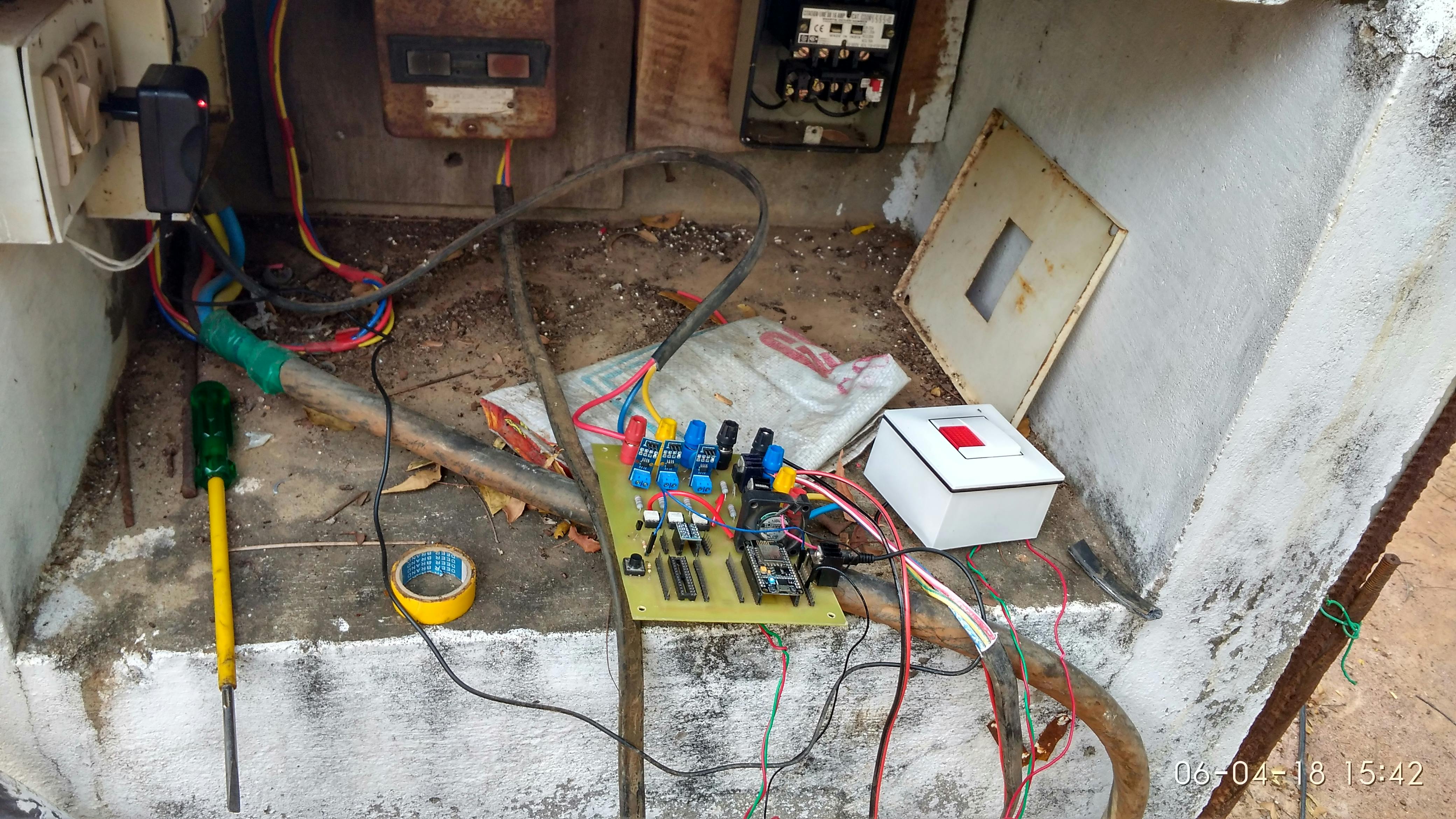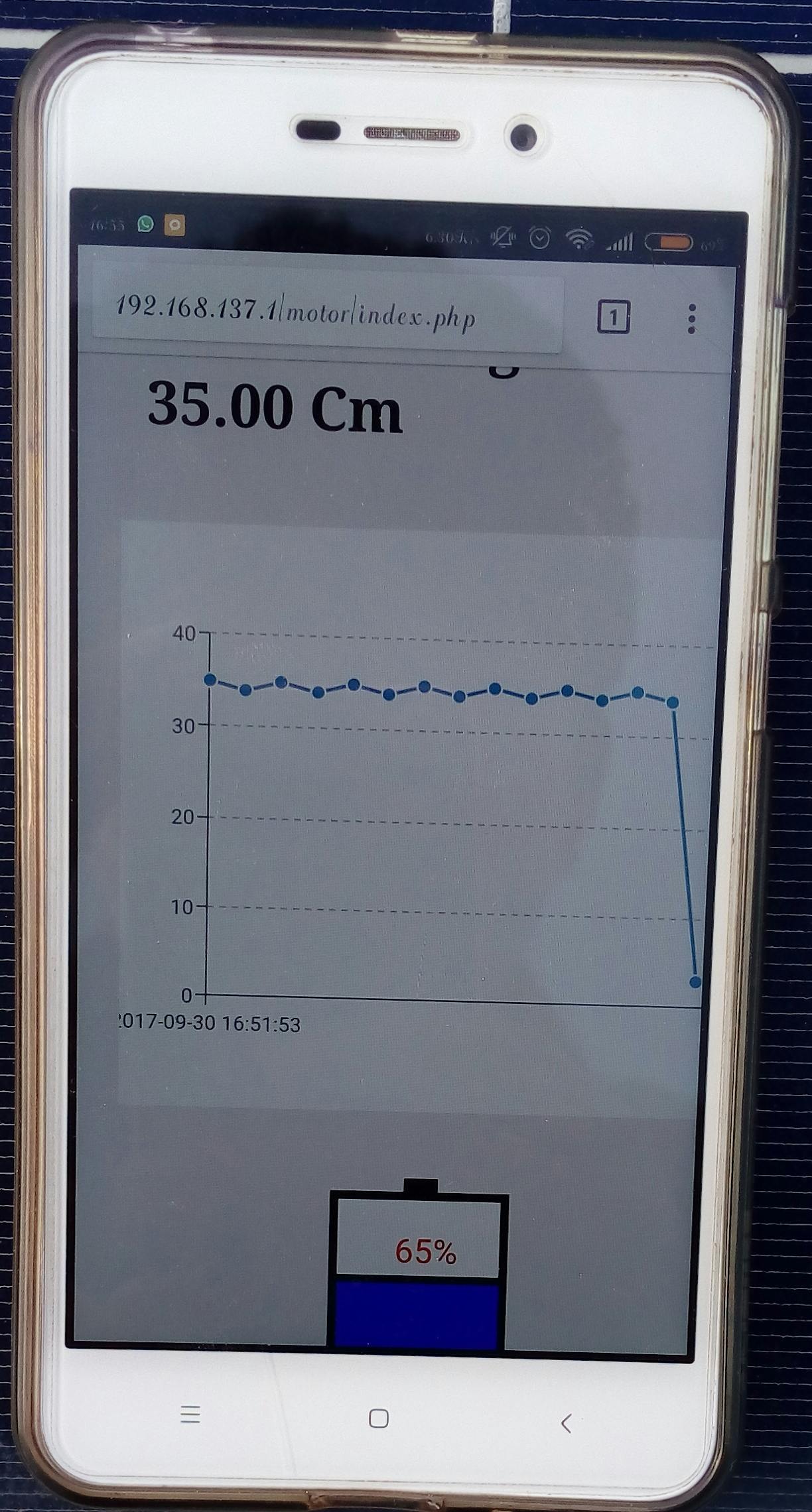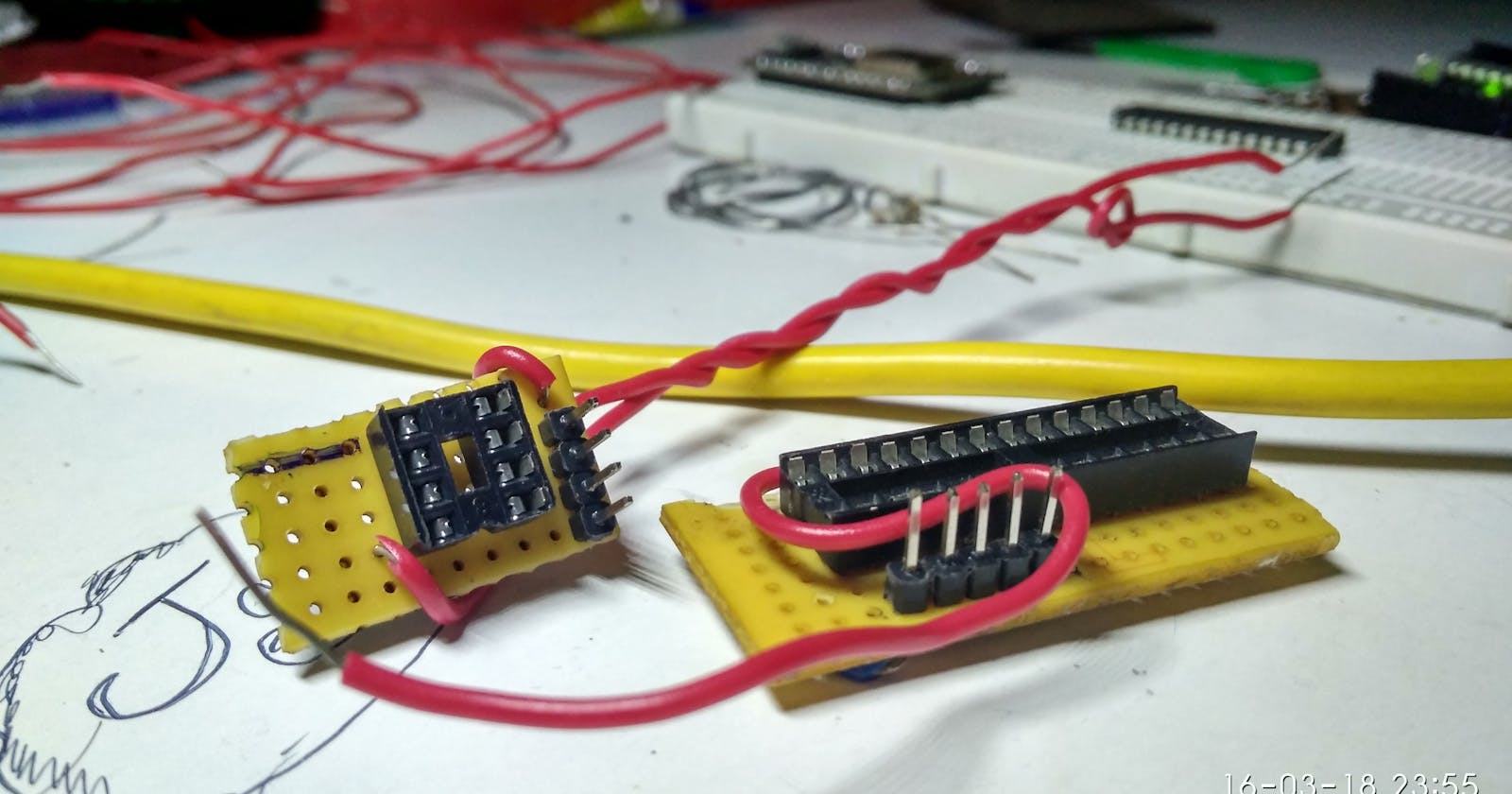Table of contents
Me and my college friend (Kasi) started exploring this area as a fun side project and a way to explore technology and apply our engineering skills as we learn. We enjoyed our work and went to the white board and redo our designs (SW/HW) in case of problems. Some of the challenges were unsolved as we have to abandon the project after college. You can read about that below. A significant part of the cost was handled by our guide/professor (Dr. Manigandan) and profit was not our intention at initial stage. Even during the last days the cost of the product is barely above BOM.
" I am writing this here, so that anyone venturing into this domain can use our experiences and not have to start from scratch. "
Product line:
Premium segment:
Automation, Alarm and control of pumps using using web apps. Business model is to charge user per/hour of running their motor via our app while selling the hardware at loss. Subscription based! Installation free.
Affordable segment:
A alarm system when water tank gets full, no web app no intelligent control, software etc, plain transistor, buzzer and discrete components. One time product cost + installation fee is based on length of wire used. Premium product line didn't see the light other than few temporary adoption inside our college. The other segment was a hit and had installed it for 4-5 houses and no marketing was done for either of the houses. It was all word of mouth. Didn't install for other customers who were eager to buy this product as I have to move to another city for job. Buy this time I was doing this alone in my home town and my friend was in another city.
What went wrong?
Poor understanding of market and people:
It was the start of Jio era and smart home devices are barely at consumer adoption. We bet on huge adoption rate and people mostly saw our premium devices as luxury product rather than consumer one. This was almost six years back, things might have changed now.
" So, understand the customer better, get on to their shoes and see what problem they want the business to solve and focus on how it can be done in a profitable way to run the business."
Technical issues:
Few of the houses hosts cell phone towers and they caused interference to our second line product's wires and caused false alarms. I couldn't find time to solve it properly. "
" Field, tests the product better than our internal testing and always take feedback from customer"
Our premium product hosts a bunch of solid state relay and our poor designs caused our devices getting blown up, but we made sure our mistakes are fixed on next PCB. One such improvement was to isolate the costly digital part (uC) with analog side with optocouplers.
" There will be N failures and one has be relentless when working with hardware."
One of our initial prototypes installed at one of the test sites (The PCB was designed by my friend Kasi) :

At that time we relied too much on Arduino and NodeMCU for uC coding, we were at the mercy of the framework and community when something happens. We soon realized this started porting our code to embedded C.
" Software needs to be professionally built." We Didn't even know SCM was a thing.
Our entire web stack was based on Apache, MySQL and PHP. Which did all the work, client signup, dashboard, graphs etc. There could have been a better solution (Hey we were a bunch of electronics engineers). You can check our UIs below, has room for improvement in terms of UI/UX.


- Always have a manual way of turning off/on the pump even without connectivity. This must be one the key take-away for you. We included a manual switch box only at the later stage of the project. (check above installation picture, the white box)
Operations issues:
Most of the houses where I installed the devices are spread across different areas and installing the devices takes huge time when done alone. So definitely focus on man power.
Support after installation is a must. Either offline or online along with at least few years of guarantee. Understand you are mostly dealing with middle class who want assurance before buying. So need a bigger team to run this company apart from technical people.
Let me know if you want to know more about our experiences and problems we faced. Happy to share our expertise.
You can ping me here in twitter.

